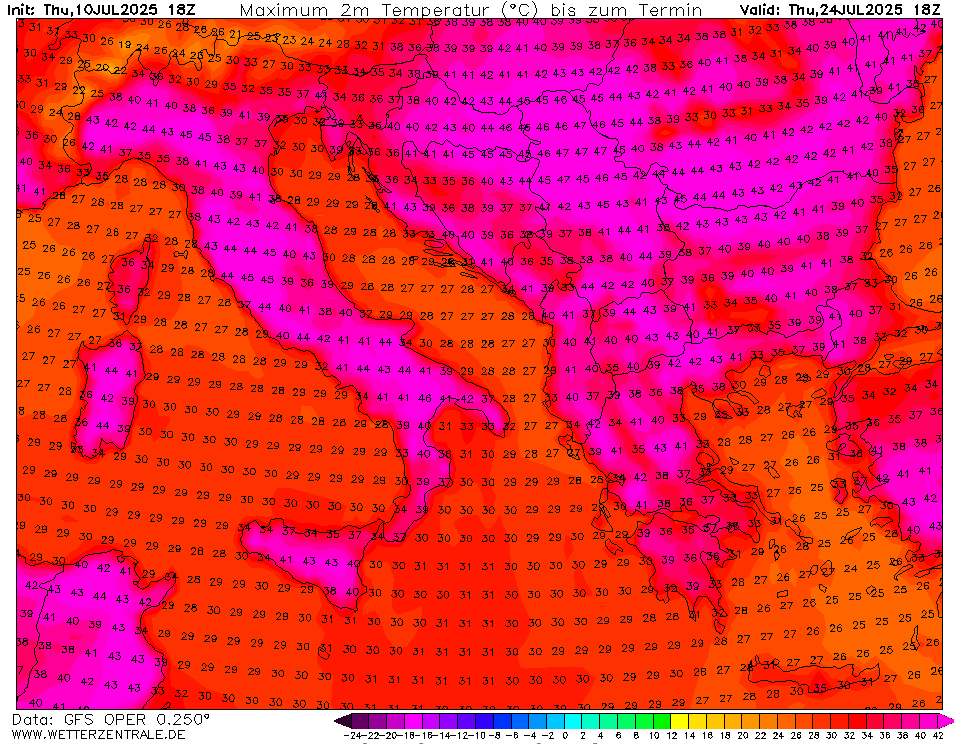
Forecast models, especially the latest GFS outputs, are raising alarms across Southeastern Europe. A powerful continental heat dome appears likely to develop over the Balkan Peninsula between July 22 and 26, with record-shattering temperatures possible. Key nations in the affected zone include Greece, Romania, Bulgaria, Serbia, North Macedonia, Albania, and parts of Croatia and Bosnia and Herzegovina.
These values would challenge or exceed all-time national records for multiple Balkan countries. The highest official temperature ever recorded in Greece was 48.0°C in Elefsina and Tatoi (1977), and in Bulgaria it stands at 45.2°C (1916). Serbia’s record of 44.9°C (2007) and Romania’s 44.5°C (1951) might also be in jeopardy.
Forecast Details
According to GFS model runs from July 10–11, the upcoming heatwave will likely be caused by:
- A strong upper-level ridge over the Eastern Mediterranean
- Advection of hot Saharan air from North Africa
- Surface pressure anomalies that block cooler Atlantic air
- Dry ground conditions enhancing surface heating
Thermal profiles at 850 hPa suggest widespread +26 to +30°C air masses, which typically correlate with surface maxima of +42 to +47°C, especially in urban and inland valley areas.
Past Heatwaves for Comparison
- In July 2007, Serbia, Bulgaria, and Greece experienced multiple +44°C to +46°C events.
- In August 2021, parts of Greece reached 47.1°C, just below national record levels.
- The 2012 Balkan drought and heatwave brought sustained +40°C+ conditions for over a week in some regions.
However, the aggressiveness of the current forecast surpasses many of those past scenarios, particularly in geographic extent and temperature magnitude.
Risks and Impacts
If realized, the following impacts are likely:
- Severe wildfire risk across Mediterranean woodlands and steppe zones
- Crop damage and water stress in agriculture-heavy zones
- Strain on electric grids due to cooling demand
- Urban heat island amplification in cities like Athens, Bucharest, Sofia, Belgrade, and Skopje
- Increased mortality risk for vulnerable populations
Governments in the region should monitor model updates, initiate heat-health warning systems, and prepare for emergency responses as the window from July 22 to July 26 approaches.



























